BAHS Teacher Planner
This post tells the origin story of the custom teacher planner that I make every year for the teachers and staff at my school.
Setting
Two or three summers ago, I was at an educational leadership conference run by my school district. I was a young teacher with only a few years under my belt, so I didn’t say no to the invite, but I was wondering why I was there. It felt weird to be the dramatically youngest teacher in my school’s cohort, I felt like an imposter.
While a lot of that conference was a waste of time (like most county professional development), there was some time that we had where we were basically locked in a room by ourselves to “plan.” We used this planning time to go through an end of the year survey that our whole staff had filled out about their life at school.
Problem
As we did this, we realized a common theme—ineffective communication. We were noticing that the teachers were frequently frustrated by the fact that information they needed regularly was spread out in a ton of different places. We also noticed that teachers were often confused about meeting dates or class rotations and that made lesson planning difficult.
Ideation
As we were talking about ineffective communication people in the room started latching on to different things and starting small group conversations. Two of the assistant principals and I started talking about creating a “bible” for teachers. We wanted an important tome that would have all the answers in it a teacher would need. We imagined this book would be the “end all be all” resource that a teacher could trust completely.
We shared our idea with the other 10 or so people in the room and everyone loved the idea, but it was nothing more than that, an idea. As our planning time came to a close and we moved on to the next part of the conference, I could not stop thinking about what this compendium of teacher resources would look like. I made bulleted lists of what would be in it, I drew sketches of what a page should look like, and I could not get this idea out of my head. I mentally checked out of the rest of the conference and was locked in my own thoughts about this project.
This conference was at the end of the school year, so once the conference was over my summer break began. After a few days of summer break with this project in my head, I needed to talk through some of these ideas. So I did what any teacher does after 3 days of summer, I went to school with a legal pad and walked into one of the AP’s offices to talk about making a custom teacher planner!
Prototyping
As we talked through all the different facets of this project, we ended up walking around the building popping into other people’s offices and getting their input. Sometimes even bouncing back and forth between offices as we ironed out problems. We decided that the book we would make needed to have a front section where we would condense all the procedures, checklists, and other info that a teacher would need to reference throughout the year to do their job. The second part of the book would be a day by day planner. Around this time our district had adopted a new teaching framework, so we figured we would make our teacher planner pages centered around this update.
After a bunch of conversations and sketching, I went home and made a mockup of a planner page. I emailed it around and after a few versions we came to a consensus. You can see the progression of the planner page below:
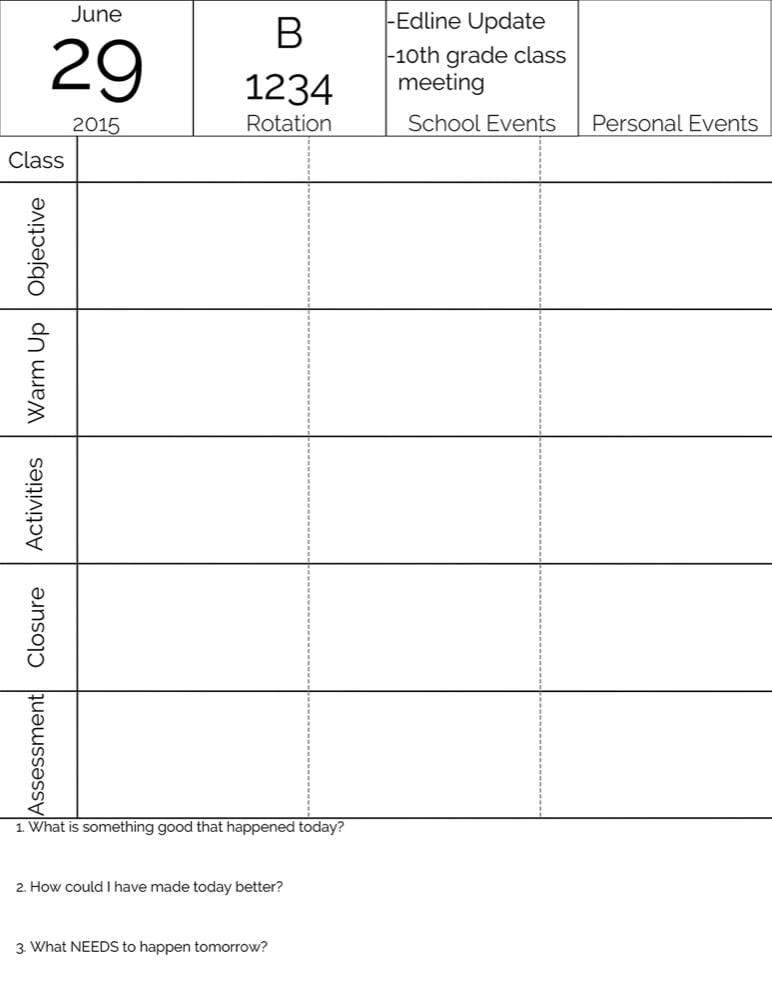
Version 1 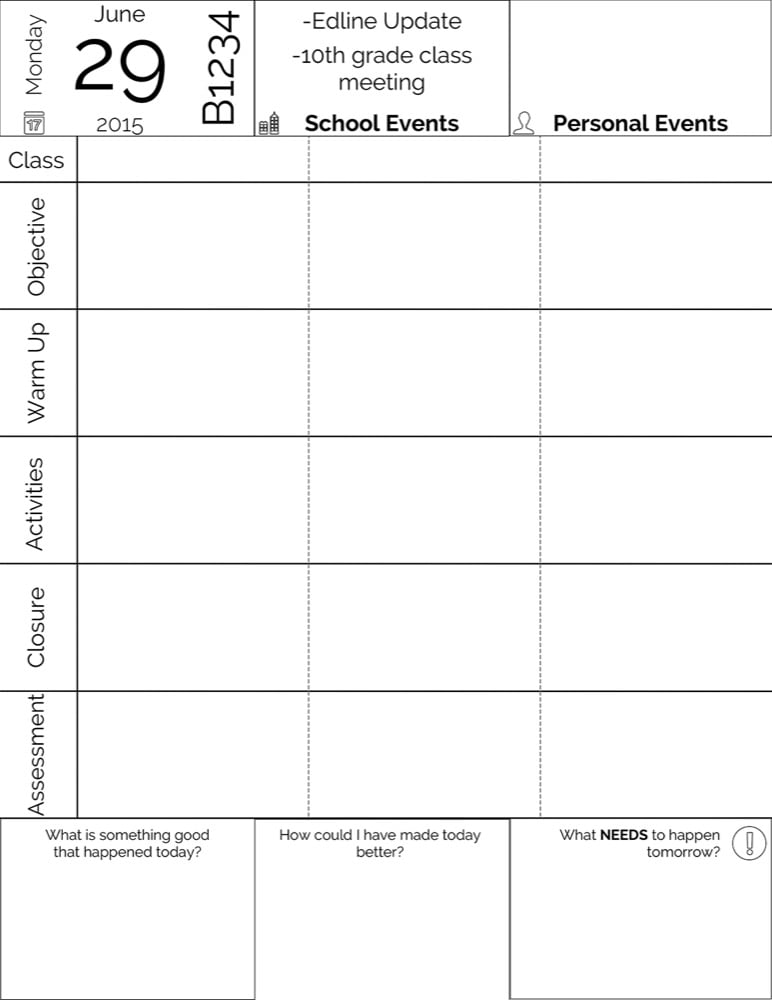
Version 2 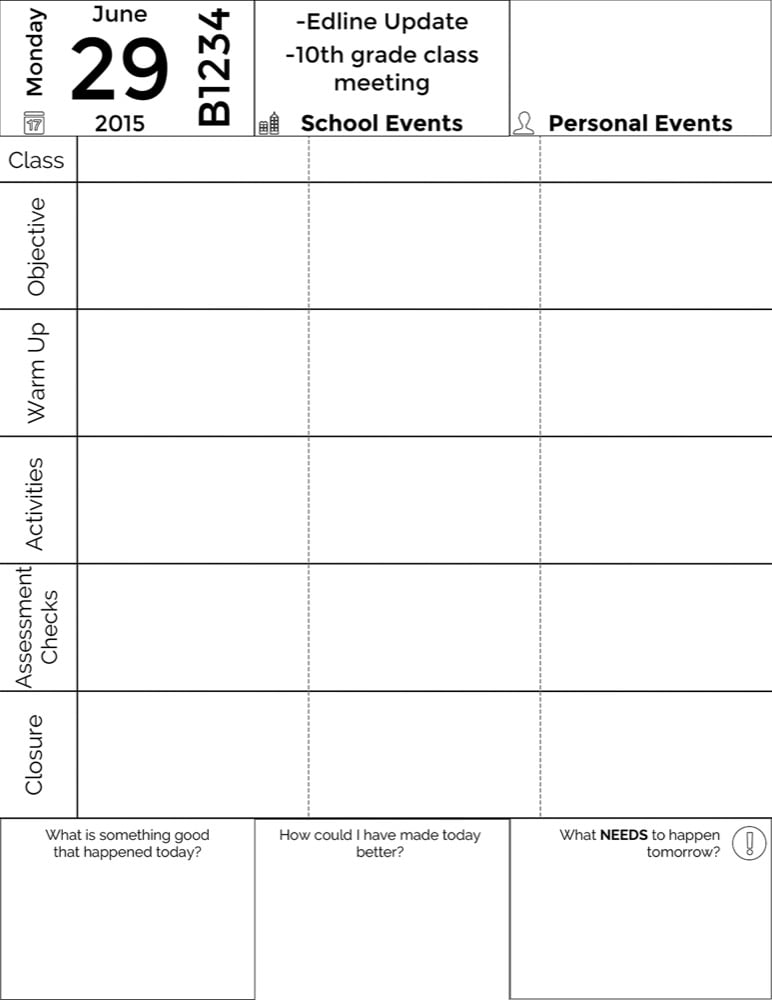
Version 3
We thought that this was a huge step in the right direction, but we had no idea if it would actually work. After tediously typing in all the dates, class rotations, and school-wide events, I exported the PDF and sent it to my favorite local printer. They did a great job and supplied us with an awesome product. It was huge, about two inches thick with hard laminated covers; you could fight crime with this thing!
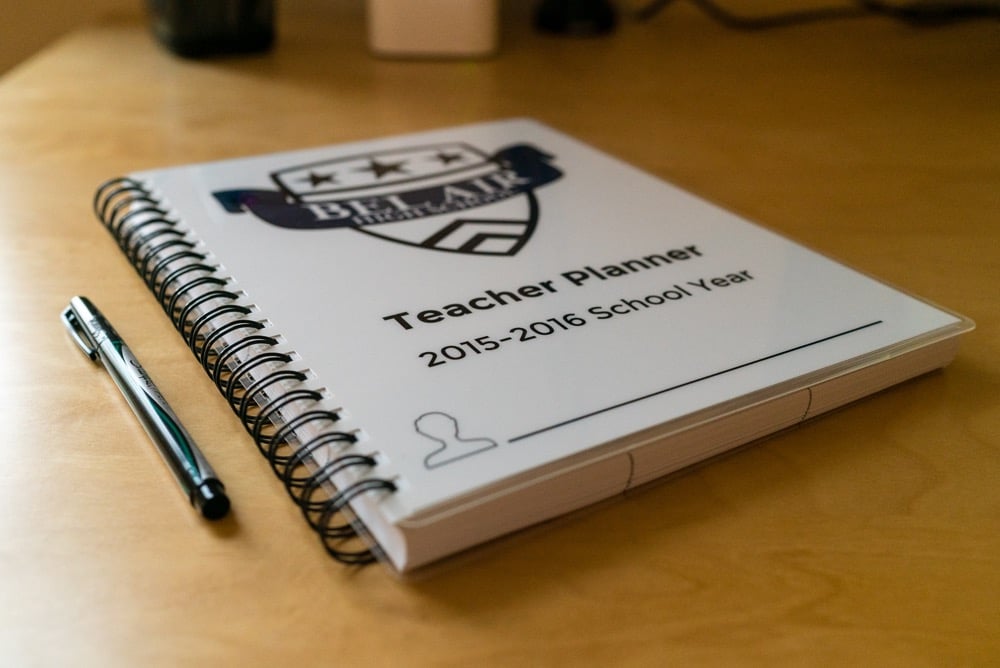
Iterations
The teachers loved many parts of the planner but gave us some feedback that we incorporated into the second edition the next year. The teachers wanted to ditch the 1 page = 1-day format of the planner and wanted to switch to a 1 spread = 1-week view. This saved on paper and price but was a little bit sad in the sense that a teacher’s whole lesson could be summed up in a space smaller than a post-it note. It also made the administration think that teachers were not seriously adopting the new framework that our county had adopted. Still, we wanted to make sure that our teachers had something they would actually use so we switched up our layout to what you see below:
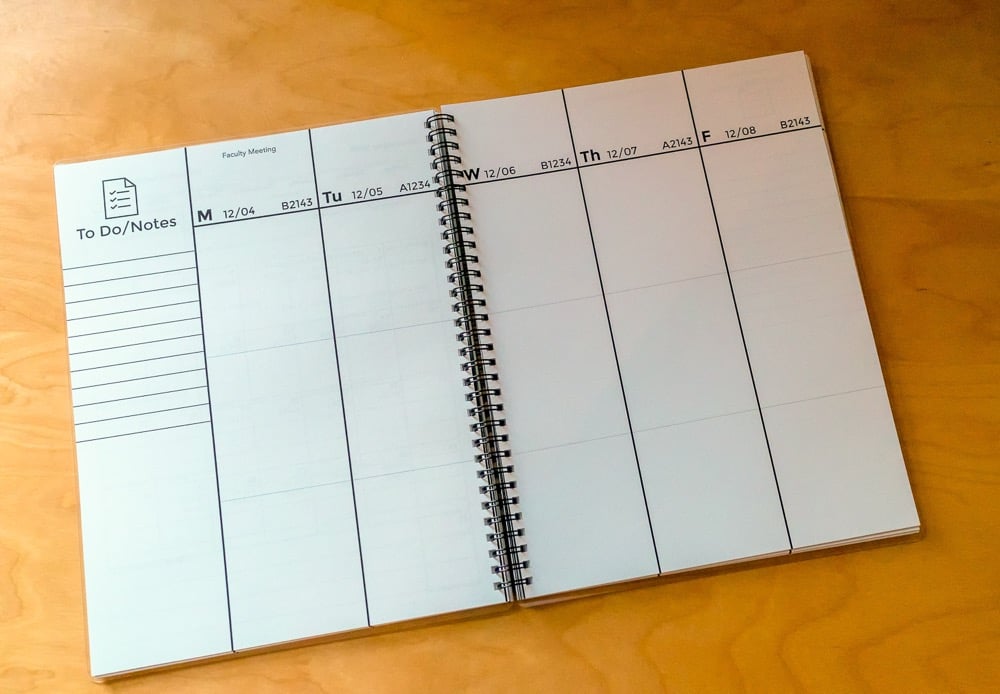
Teachers greatly preferred the weekly view over the day-by-day view, so we kept that format for the third edition. Not resting on our laurels we further iterated the planner to include a month overview at the start of the month as well as monthly checklists to remind teachers of some best practices that would make their lives easier throughout the year.
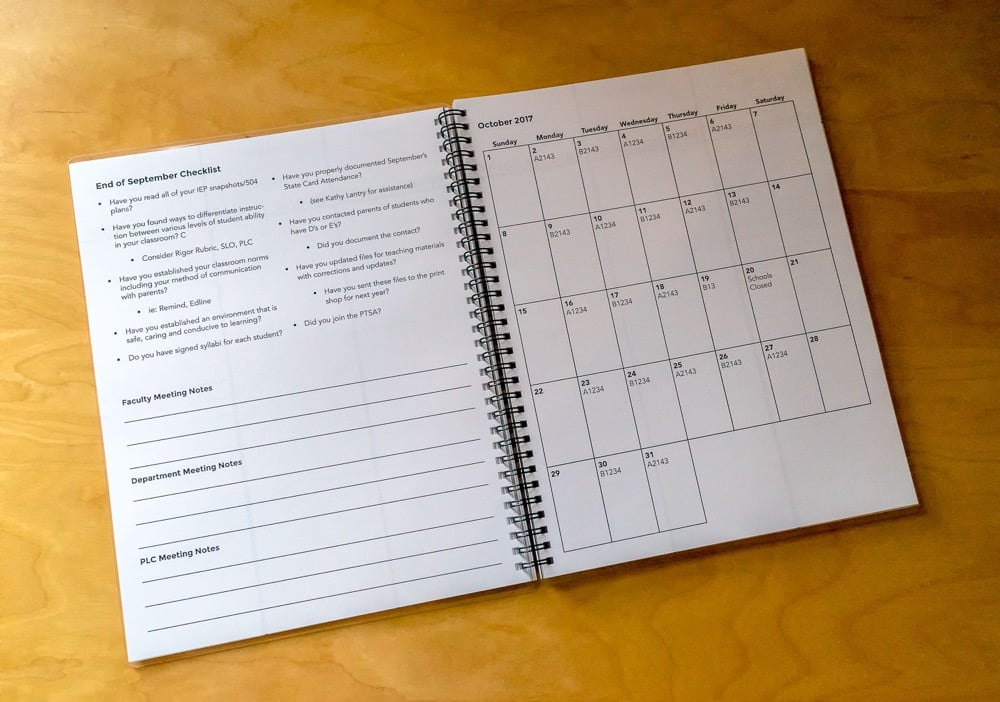
We also wanted to use the covers of the planner in a more meaningful way this year. After some discussion with one of the new administrators, we decided to use the back cover of the planner as the basis of our new emergency evacuation plan. The durable lamination and color printing means that every teacher could have evacuation maps and checklists for emergencies in a portable fashion.
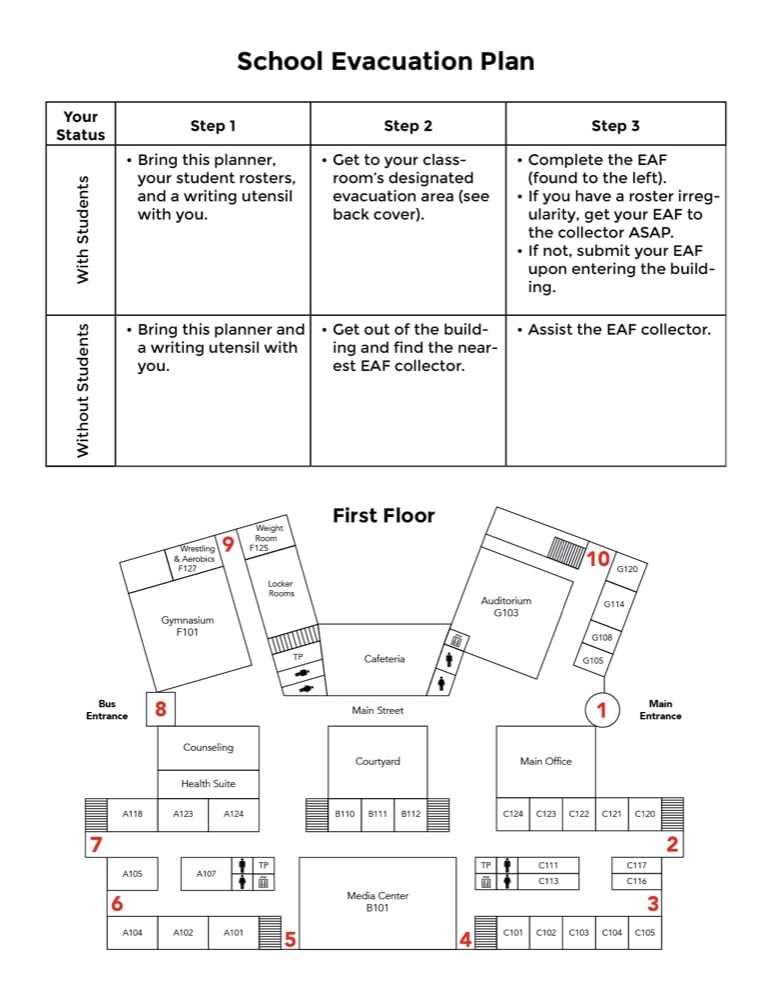
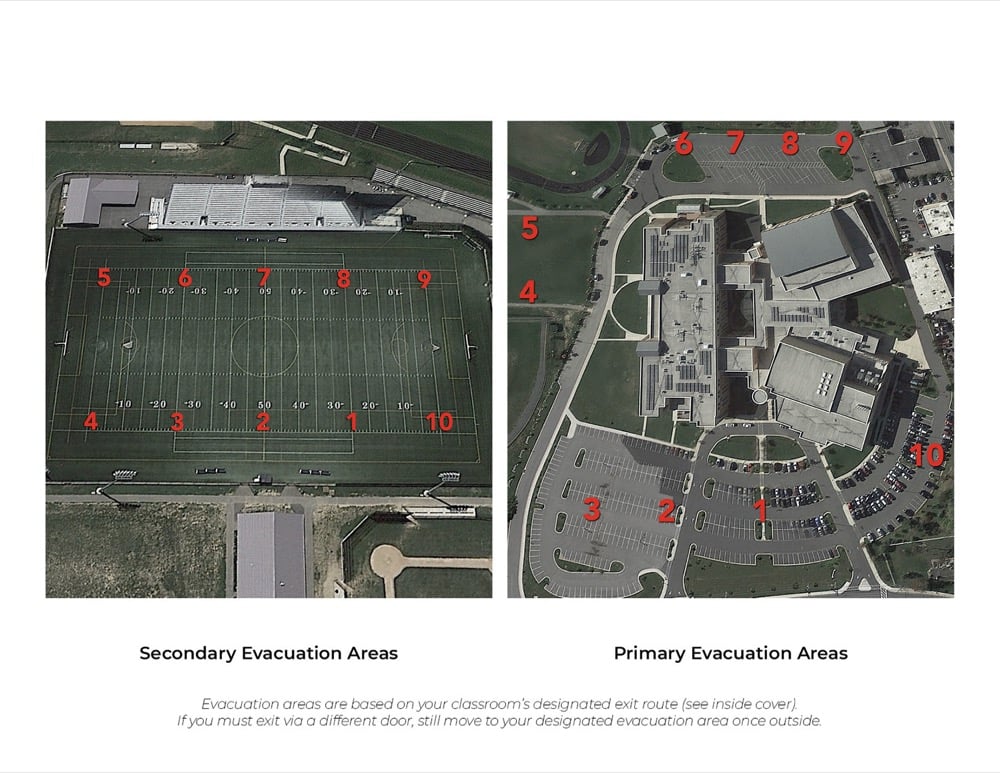
At this point, we have only been using the third edition of the planner for a few months, so I will collect feedback and iterate again for next year.
Conclusion
This planner project has evolved into a fun yearly summer project. It is a helpful way for me to get some perspective on the year and to work with the admin to design part of the teacher experience. Planner delivery day has become something that the teachers get excited for and marks the official end of summer.


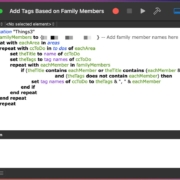









Leave a Reply
Want to join the discussion?Feel free to contribute!